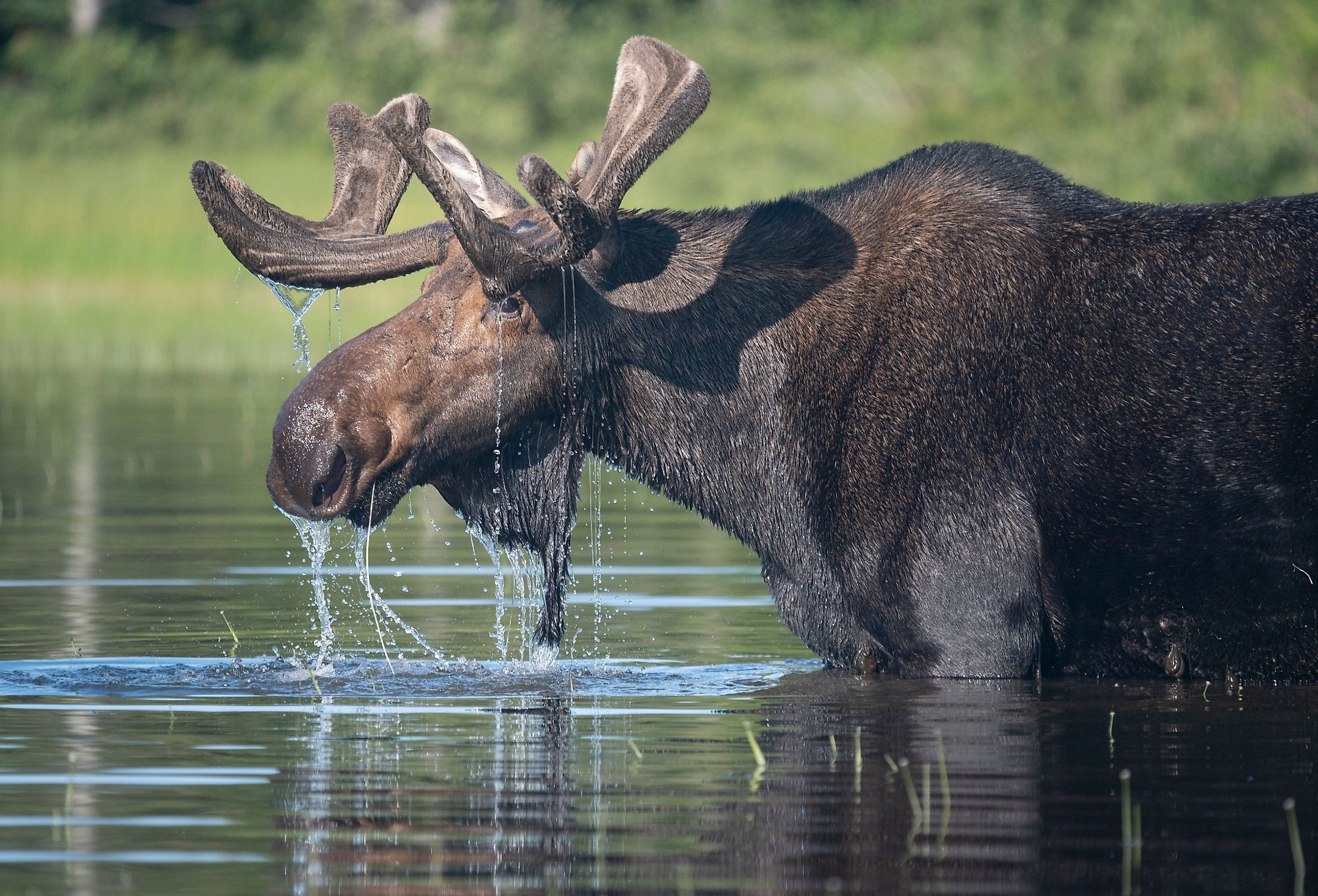
The 8 Deadliest Animals in Maine
You might not think of Maine as a particularly dangerous place, but Maine has more than its fair share of danger. Although you shouldn't avoid The Pine Tree State because of the wildlife, it never hurts to be prepared. Whether visiting the East Coast and enjoying the surf on the brilliant Atlantic Ocean or trekking through the forest, there are risks everywhere you go and Maine is no exception. If you are hoping to educate yourself about the furry, fuzzy, and finned denizens that call Maine home, then look no further. Learn more about some of the deadliest animals to avoid on your next visit to this New England state.
Moose
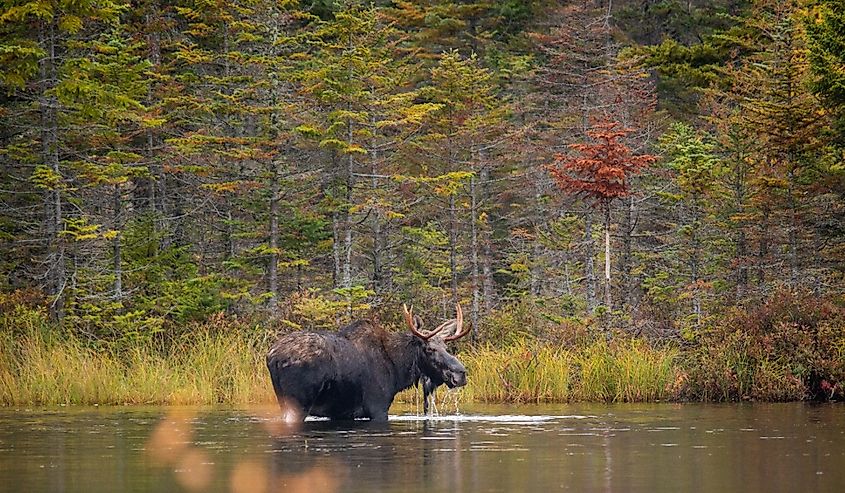
These hefty creatures typically stand six feet tall at their shoulder and weigh over 1,000 pounds. Moose come equipped with sets of antlers that can weigh as much as 80 pounds themselves which are used to fight other males and ward off predators. Moose attacks are rare, but they do happen. For example, as many as 10 such attacks take place annually in Alaska, while at least four took place in Colorado in 2023.
Moose are most common in the Western Lakes, the Kennebec Valley, the Maine Highlands, and Aroostook County. Always give these animals space and keep your dogs leashed. Do not run away, as it might cause a chase, and these animals can reach impressive top speeds of 35 miles per hour. Instead, slowly back away. However, if it charges, find shelter in a tree, building, or vehicle, or find an object to put between you and the moose.
Domesticated Dogs
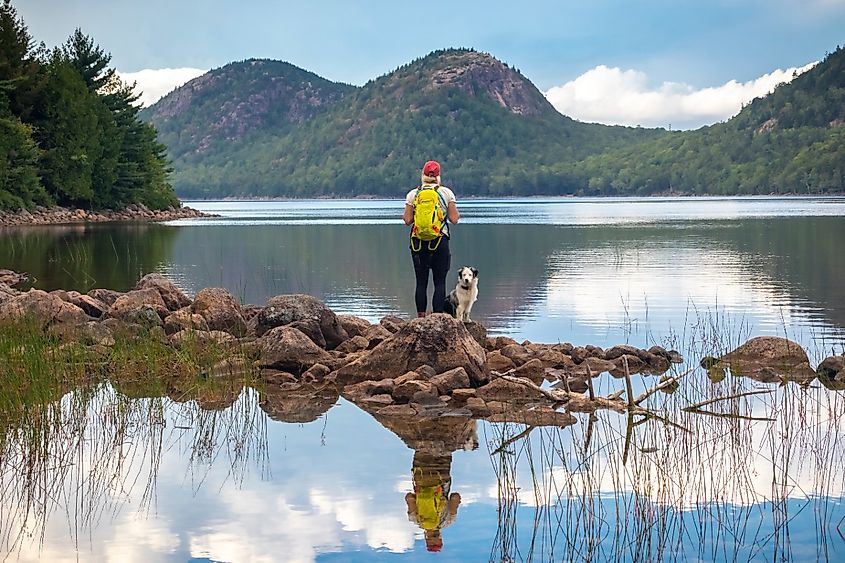
One of the greatest threats to people just so happens to be man’s best friend. Our adorable canine companions are a source of joy and fulfillment for many Americans, making it no surprise that there are an estimated 65 million households in the US that own dogs. Unfortunately, these animals are responsible for the 4.5 million dog bites that occur every year, according to the Centers for Disease Control.
While there are several reported dog attacks in Maine each year, they are rarely fatal. Pit Bulls, German Shepherds, and Rottweilers are the main offenders, and a huge amount of bite attack victims are postal workers. Besides being incredibly painful, several diseases can come from being bitten. Cellulitis, meningitis, and rabies are a few pathogens that can come from a dog attack.
Deer
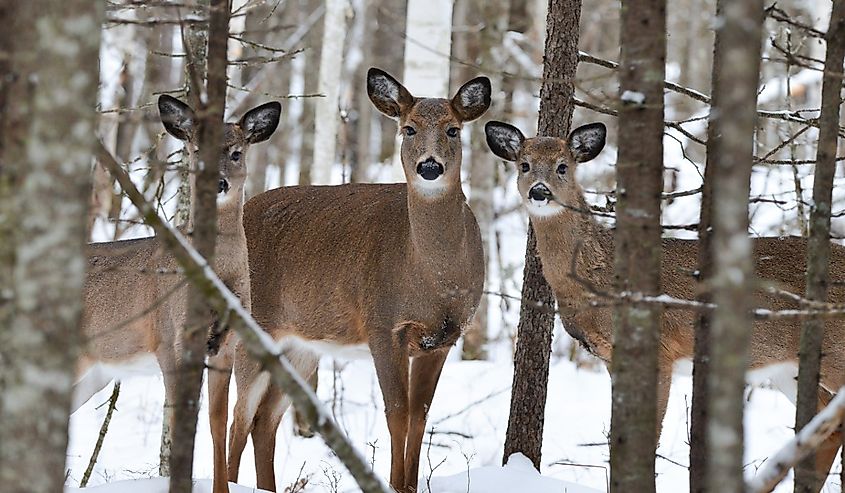
Far from what movies like Bambi might have led you to believe as children, deer are no laughing matter and the risk posed by deer is nothing to scoff at. There are approximately 30 subspecies of white-tailed deer in Maine and they are found throughout the state and none of them should be taken lightly. This former Disney star is at least partly responsible for 1.5 million auto collisions annually in the US, so be on the lookout for deer crossings while driving Maine’s motorways.
Another risk posed by deer is their behavior. There were documented cases of deer attacks on humans at South Illinois University between 2005 and 2006, and there have even been recorded fatalities due to such attacks. Deer are especially aggressive during their fawning season and pose the risk of carrying ticks with Lyme disease, so steer clear.
Deer Ticks
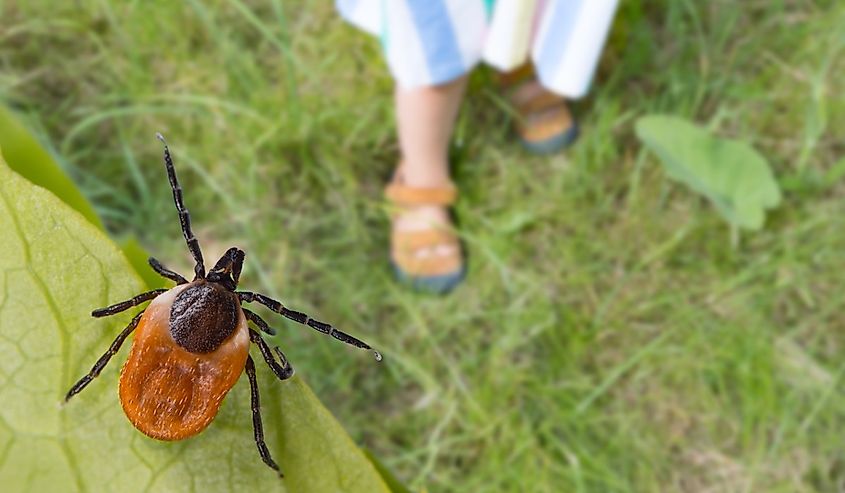
If a deer attack was not bad enough, those unlucky enough for a dust-up with a white tail may find themselves having another problem: ticks. Like mosquitos, ticks are not dangerous due to their impressive size but are dangerous despite it. These small insects are commonly found in overgrown areas like forests and in greenery waiting for an unsuspecting hiker’s bare leg to pass by.
As ticks feed on blood, they can transmit diseases they may harbor such as Lyme disease. Because ticks are so small, some people who have been bitten do not even notice the little insect on themselves until they begin feeling the effects much later. Lyme disease, for example, can lead to arthritis and even facial paralysis. After a long day of trekking through Maine’s wilderness, a once-over for ticks is always a good idea.
Black Widow Spiders
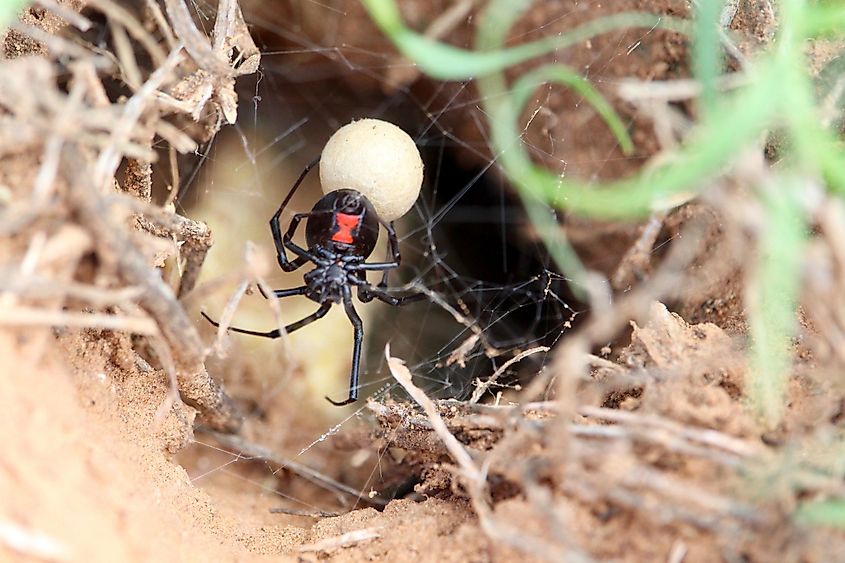
This year, Maine became home to one of the deadliest spiders known to man. The Black Widow spider, notorious for its venomous bite, is a small but fearsome creature. The males of this species are no threat and their bites cannot penetrate human skin, but the females are another story altogether. Their black bodies and the iconic red hourglass shape on their abdomen are globally recognized to mean danger.
When bitten by this spider, immediate medical attention is necessary as its bite can be up to 15 times stronger than that of a rattlesnake. The venom of the female Black Widow attacks the victim's nervous system and can be especially dangerous for children. These spiders can be found in dry, dark, and secluded spots like garages. Thankfully, despite their lethality, these spiders rarely bite humans unless provoked.
Great White Sharks
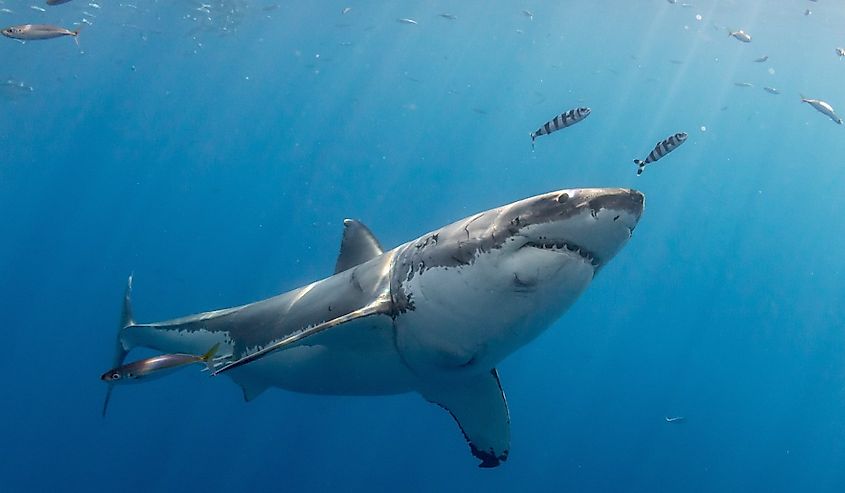
In July 2020, a swimmer from New York was fatally attacked by a great white off Bailey Island in Maine. Scientists discovered the perpetrator responsible by examining a tooth fragment. There are a few hotspots where these apex predators are found; Hermit Island and Ragged Island especially are known as notorious great white hangouts. Great whites can live over 70 years in the wild and weigh up to 4,500 pounds. There are an average of 63 shark incidents annually worldwide, according to the Florida Museum of Natural History.
Thanks to the film Jaws, these animals have gotten a bad reputation, but they are actually vulnerable, if not endangered, thanks to poaching. Experts advise swimming in groups to dissuade these sharks from attacking, and to avoid swimming when visibility is low like at night. These animals have horrible eyesight and just might mistake you for a seal.
Mosquitos
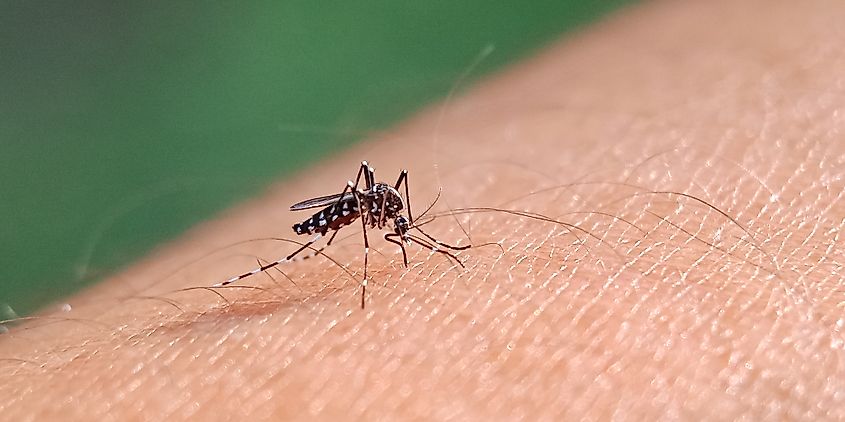
Your garden variety mosquito is severely under-appreciated for its lethality. What it lacks in size, this insect makes up for in sheer numbers and the viruses it carries and transmits through its feeding mechanisms. Diseases such as Yellow Fever, the Zika Virus, and Dengue Fever can all be transmitted by these tiny vampiric pests.
With their impressive rate of reproduction, mosquitoes claim more lives globally than any other creature. It is estimated over one million people die each year globally thanks to mosquito-borne diseases. Mosquitoes can be found wherever there is standing water, making them a frequent presence in Maine during summer. Wear loose-fit clothing and long-sleeved shirts and pants to avoid mosquito bites and treat clothing with permethrin, according to the CDC.
American Black Bear
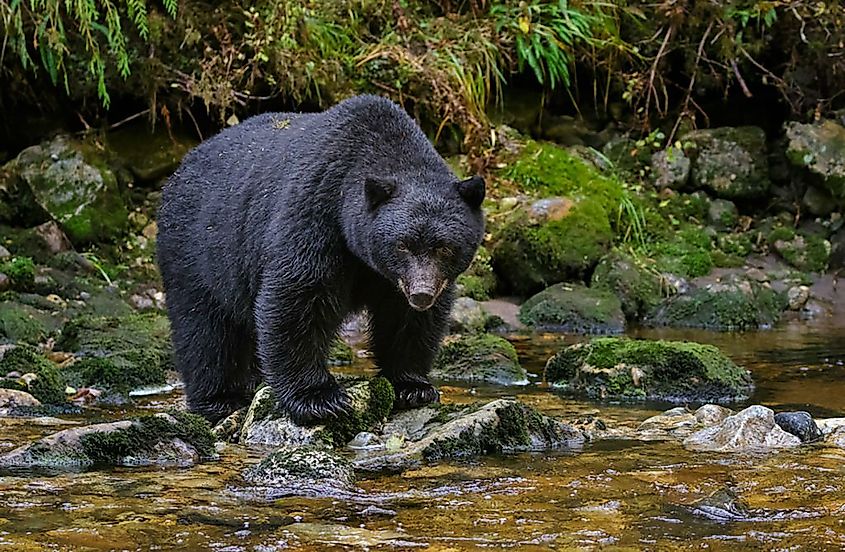
The American Black Bear is the diminutive cousin of the ferocious Brown Bear, but they can still reach a height of 5 to 6 feet and can weigh between 200 and 600 pounds. These animals still very much constitute a threat, so do not think you are out of the woods just because you see this one and not a grizzly. An average of less than one person per year is killed by black bears in North America.
However, while these bears are generally wary of humans, they can become accustomed to human presence if they have been fed by people, which can make them a significant danger. The best way to deal with these animals is to scare them away by making lots of noise. Black bears are most often found in the less densely populated northern and eastern Maine far from the central coastal and southern regions.
When visiting Maine, from its stunning coasts to the rugged hinterlands, be sure to come prepared for anything. There is so much to see in this beautiful state that exploring it to the fullest is both appealing and highly encouraged. Take care to keep your eyes peeled for signs of deer crossings when traversing the state’s rural roads and try to stay on the lookout when swimming off the coast of Maine. The likelihood of being bitten by your neighbor’s pooch is infinitely higher than a shark attack, but it never hurts to take precautions.











